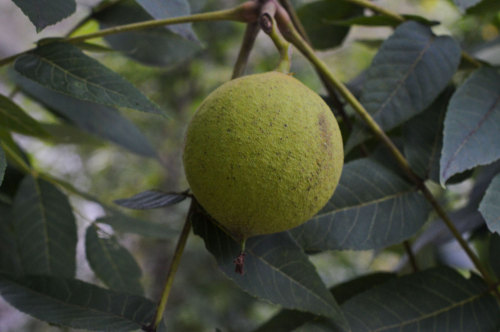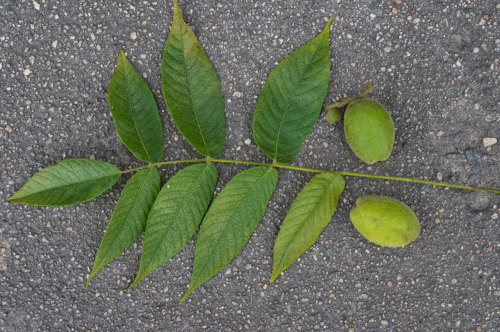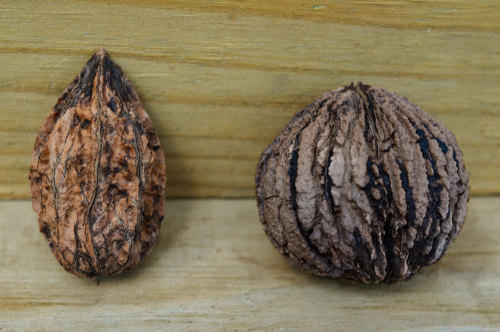Black Walnut and the White Walnut The Black Walnut compared to the White Walnut also known as the Butternut. Both of these nuts are worth getting to know if you don’t know them already. They are very similar and very different at the same time.
When cleaning the hulled nuts be sure to do it outside in buckets or you may end up clogging your kitchen drain!
Juglans nigra, or black walnut, is a very hardy species of nut tree. The plant sets fruit in summer but the nutmeat isn’t ready until fall. This is the time of year you might want a hard hat if you are walking under a black walnut tree. Some of the hulled nuts can be nearly as big as a fist and pack quite a wallop when dropped from upper branches. It is important to test a few fruits before picking black walnuts. This is because they tend to abort unfinished nuts and you may be picking up aborted nuts rather than nice, fat ripe fruits. Autumn is the time for black walnut harvesting. In the tree’s native region of eastern North America, fruits drop from September until October. Dropped hulls usually mean ripe fruits, but you should check the appearance to ensure ripeness. The unripe fruit is green while the fully ripe fruit is yellow-ish verging on tan. The hulls have a potent stain, so it is advised to wear gloves when harvesting the fruit. The stain will leave a permanent dark brown on fingers that aren’t protected. Don’t bother picking up fruits that are completely black. These are probably too far gone and the nutmeat may be rotten.
Butternut (juglans cinera) is a fast growing tree closely related to and resembling Eastern black walnut (juglans nigra). The two trees can often be found growing together in rich flood plains as well as on the thinner soil of the hillsides. Butternut, aka white walnut, is a sun loving tree that grows rapidly. Several feet of growth is often seen from seedlings every year. The leaves are big, over a foot long. They are composed of many leaflets, often 9, with a large terminal leaflet. An easy ways to tell a butternut from a black walnut is the nuts of black walnuts are round, while butternuts are more barrel shaped.
All Photographs by Gary Cremese
Post link Wed, 22 Sep 2021 14:44:24 






